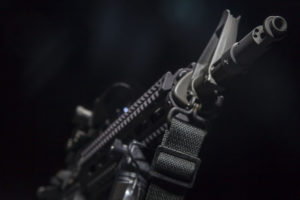The Humanevangelist: Could the Bloodbath in Las Vegas Kill Off the NRA’s Lies at Last?

After so many horrific shootings—Columbine, Virginia Tech, Aurora, Sandy Hook, Orlando, and many, many others—it’s almost too enervating to write about the horror in Las Vegas. At least fifty-nine dead and over 500 wounded: a truly staggering toll. But there’s something different here.
When mentally ill Adam Lanza, a man who should never have held a gun, stalked the halls of Sandy Hook Elementary School, shooting children and teachers alike, the National Rifle Association (NRA) argued for arming teachers. More guns, not fewer, would make society safer its president, Wayne LaPierre, claimed.
But Stephen Paddock’s slaughter of concertgoers in Las Vegas differs not only in scale but kind. Shooting at will from thirty-two stories above the crowd, with a nearly inexhaustible cache of weaponry, Paddock put the lie to the claim that when it comes to guns, the more the better.
Bill O’Reilly, the comeback curmudgeon of right-wing commentary, admits as much in a blog essay: “This is the price of freedom,” he writes. “Violent nuts are allowed to roam free until they do damage, no matter how threatening they are.”
O’Reilly then trots out two NRA lies: that our only choice is between untrammeled access to weapons or a complete ban on them; and that the Constitution tells us to accept the former.
“The Second Amendment is clear that Americans have a right to arm themselves for protection,” O’Reilly opines. “Even the loons.”
No, it is not that clear. The slaughter at the Harvest country music festival should prompt everyone to question these dubious claims. Does freedom entail an unlimited right to “bear arms?” Only if by “freedom” we mean “anarchy”—or to borrow Thomas Hobbes’ more descriptive phrase, “the war of all against all.”
The Founders had no such intention. The clause “A well regulated Militia, being necessary to the security of a free State,” tucked firmly into the Second Amendment, would have no meaning if every citizen had the right to take up arms against neighbors, strangers, or the government itself. That should be obvious, but decades of NRA propaganda has dulled people’s wits.
Dig into gun-rights advocacy, and you find a feral distrust of government. NRA supporters hover between believing government is too strong or too weak. Here are examples from an inexhaustible “literature” on the web:
Immigrant Lily Tang Williams, in an essay republished in the National Review, argues, “Having previously lived under a tyranny, it seems clear to me that the US government is going to try to infringe my Second Amendment right. What happened in China could happen in America. If the government can tell us what arms to bear, where to bear them, and how many shots you need to use to defend yourself, we might just become slaves.”
Writing at The Federalist (irony alert!), John Donovan warns: “There is no protector; there is no guardian; there is no defender except oneself.… The wolves are among us once more, and no law will protect you.”
What these two, and many if not most Second Amendment radicals have in common is this: they prefer the law of the jungle to the rule of law.
But this is a vision of madness. Long before guns were invented, when killings had to be done retail, violence was vastly greater than in modern societies. Yet, modern technology means anyone can aspire to genocide.
Paddock poses another question for us: even supposing the NRA view were correct, does the “right to bear arms” mean any kind of modern weapon? During Revolutionary times, the best available rifle had an accuracy range of about 300 yards and took two to three minutes to load. Armed with such a Pennsylvania long rifle, it would have taken Paddock a full forty-hour week to shoot all his victims.
With the convenience of modern technology, he was able to commit mass murder within minutes. How does that differ from setting off a bomb in a crowd? Would Paddock have been within his Second Amendment rights to launch rocket-propelled grenades from the end of his rifle?
Does “bear arms” mean you actually have to hold a gun? What if the next mass shooter uses gun-equipped drones (as I predicted in these pages several years ago)? Sensible weapon-control laws won’t always work—indeed, they might not have stopped this slaughter—but they can curb violence and remain compatible with democracy. We can see examples all around us—to the north in Canada, across the Atlantic in Great Britain and Europe, and down under in Australia, to name a few.
The NRA’s anarchy-or-tyranny dichotomy has always been absurd, but Stephen Paddock, now an emblem of nihilistic evil, has at least stripped away the veneer of plausible justification. If you stand for absolute gun freedom, you crush the rule of law and the idea of society under foot.
